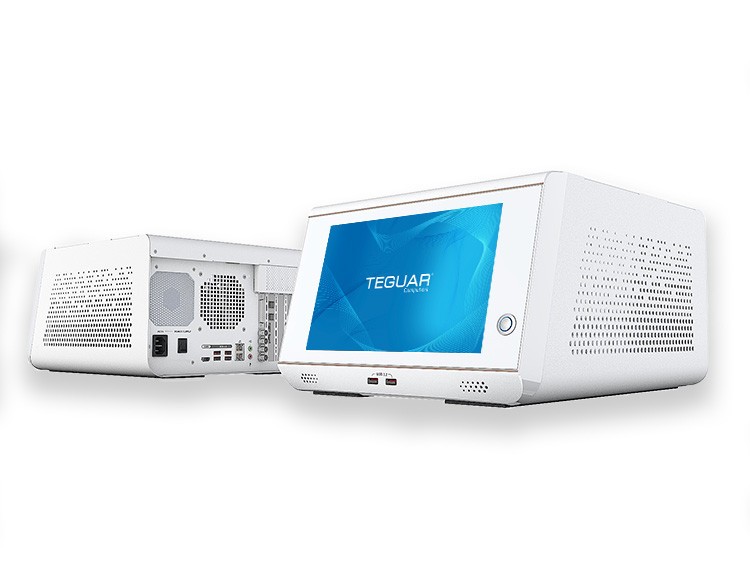Antimicrobial Surfaces and Medical-Grade Materials
A healthcare-associated infection (HAI) is an infection that someone gets from a hospital, long-term care facility, surgical center, or another healthcare facility. According to the CDC, 1 in 31 patients will get at least one HAI after receiving care in a hospital. Although the rate of HAIs has decreased over the last few years, frequently touched surfaces, such as tables, furniture and touchscreen computers, are still a concern, as they greatly contribute to the number of HAIs. Antimicrobial surfaces are designed to prevent the growth of microbes, including bacteria, fungi and mold. This reduces the spread of infectious diseases, such as MRSA, Staphylococcus, E. Coli and COVID-19.
Antimicrobial is defined by Merriam-Webster as “destroying or inhibiting the growth of microorganisms and especially pathogenic microorganisms.” It is sometimes used interchangeably with “antibacterial,” but antibacterial is just part of being antimicrobial. Microbes include bacteria, fungi, yeast, mold, and viruses, such as SARS-CoV-2, the virus that causes the Coronavirus disease.
Solid and soft surfaces use different antimicrobial agents. As explained by Sue Barnes, RN, CIC, FAPIC in her article in Infection Control Today, “the antimicrobials used to manufacture solid surfaces include copper, silver, and organosilane. Antimicrobials used to impregnate soft surfaces include triclosan, silane quaternary ammonium, zinc pyrithione and silver based compounds.” For the purpose of this article, we will focus on hard surfaces, particularly medical-grade plastics and antimicrobial coatings, both of which are used on Teguar Medical Computers.
Antimicrobial Coating
 The compounds used in antimicrobial coatings vary, but often include copper, silver and other metal-based compounds that have natural antimicrobial properties. Coatings typically work by releasing an antimicrobial agent from the surface that kills microbes before they have the chance to latch onto the surface. They can also work by making the surface non-adhesive, so microbes cannot stick to the surface. (See Figure 2 in this article, for an illustration of how antimicrobial coatings thwart off microbes.)
The compounds used in antimicrobial coatings vary, but often include copper, silver and other metal-based compounds that have natural antimicrobial properties. Coatings typically work by releasing an antimicrobial agent from the surface that kills microbes before they have the chance to latch onto the surface. They can also work by making the surface non-adhesive, so microbes cannot stick to the surface. (See Figure 2 in this article, for an illustration of how antimicrobial coatings thwart off microbes.)
Antimicrobial coatings have the advantage of being able to be applied to almost any surface in a healthcare setting. A recent study found that applying an antimicrobial coating to patient rooms and common areas of two hospitals reduced HIAs by 36% over the course of a year. The study also found that after applying the coating, the total amount of bacteria present declined by more than 75%.
A downfall of antimicrobial coatings is that they become less effective over time. In the case where an entire hospital is being sprayed with antimicrobial coating, having to reapply the coating could be timely and costly. Additionally, the toxicological and environmental effects have not been fully studied yet. However, for medical devices, like touchscreen PCs, antimicrobial coatings are a very effective way to keep patients and staff safe and cut down on the rate of HAIs.
Medical Grade Plastic
 An easy and highly effective way to reduce HAIs is to frequently wipe down surfaces with strong chemical disinfectants. However, most plastics, polished surfaces, and standard LCD touchscreens, will degrade with the use of disinfectants. According to SABIC, a chemical manufacturer, “chemical exposure may result in either physical degradation (stress cracking, crazing, swelling and discoloration) or chemical attack (reaction of chemical with polymer and loss of properties of the thermoplastic material).”
An easy and highly effective way to reduce HAIs is to frequently wipe down surfaces with strong chemical disinfectants. However, most plastics, polished surfaces, and standard LCD touchscreens, will degrade with the use of disinfectants. According to SABIC, a chemical manufacturer, “chemical exposure may result in either physical degradation (stress cracking, crazing, swelling and discoloration) or chemical attack (reaction of chemical with polymer and loss of properties of the thermoplastic material).”
If plastic cracks, due to exposure to medical-grade chemicals, it creates an unsafe environment for patients and clinicians. Cracks create a space for germs and bacteria to grow and they can be sharp. Plus, any damage to the housing of a computer can lead to internal damage, which can result in hardware failure. Medical grade plastics are rigorously tested to ensure they can stand up to these chemicals. They can be disinfected between each patient for the entire lifespan of the computer, and will not degrade or crack.
Medical grade plastic also has antimicrobial additives that give it life-long antimicrobial properties. Like most antimicrobial coatings, antimicrobial plastics thwart off microbes by releasing agents that “penetrate microbes rendering them unable to function, grow, or reproduce,” as described in the book Introduction to Plastics Engineering. This book also describes the process in which antimicrobial additives are baked or “melt blended into the polymer during processing,” which can enhance the effectiveness and quality of the product.
These technologies are being used more and more, particularly in healthcare settings, but also in other spaces. Public kiosks, food production areas, airplanes, and cruise ships are some areas where this technology is either already in use or being tested. The Coronavirus pandemic calls for more innovative ways to reduce the spread of germs. People are disinfecting surfaces more than ever before and consumer-grade computers will not stand the test of time.
To learn more, see our medical computers, or contact us to discuss your project or request a demo.
Sources:
academic.oup.com
cdc.gov
health.gov
infectioncontroltoday.com
merriam-webster.com
ncbi.nlm.nih.gov
sabic.com
sciencedirect.com












